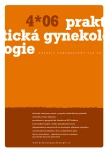Prevalence and geographical distribution of HPV infection: Do we know which types shall we vaccinate against?
Authors:
prim. doc. MUDr. Radovan Pilka; Ph.D. 1; doc. MUDr. Zdeněk Rokyta, CSc. 2
Authors‘ workplace:
Gynekologicko-porodnická klinika LF UP a FN Olomouc
1; Gynekologicko-porodnická klinika LF UK a FN Plzeň
2
Published in:
Prakt Gyn 2006; 10(4): 145-146
Overview
To highlight the geographical variation in the human papilloma virus (HPV) type distribution we performed an analysis of data published in international surveys. Changes in the validity of different HPV screening cocktails and estimations of the potential number of cases prevented by HPV specific vaccines were evaluated. Higher than average proportions of type 16 were found in northern Africa, of type 18 in Asia, of type 45 in sub-Saharan Africa and of type 31 in Central/South America. The impact of modifying the number of types in the screening cocktail tests would be small and probably irrelevant for screening programs. A vaccine including types 16 and 18 could potentially prevent 71% of cervical cancers worldwide, but its impact with regard to the percentage of cases potentially prevented would be higher in Asia and Europe/North America. In contrast, a vaccine containing the 7 most common HPV types would prevent about 87% of cervical cancers worldwide, with little regional variation.
Key words:
human papilloma virus – geographical distribution of HPV – prevention of HPV – vaccine – cervical carcinoma
Sources
1. Bosch FX, Lorincz A, Munoz N et al. The causal realation between human papillomavirus and cervical cancer. J Clin Pathol 2002; 55: 244-265.
2. de Villiers EM, Fauquet C, Broker TR et al. Classification of papillomaviruses. Virology 2004; 324: 17-27.
3. Bosch FX, de Sanjose S. Chapter L. Human papillomavirus and cervical cancer-burden and assessment of causality. J Natl Cancer Inst Monogr 2003; 31: 3-13.
4. Saslow D, Runowicz CD, Solomon D et al. American Cancer society guideline for the early detection of cervical neoplasia and cancer. CA cancer J Clin 2002; 52: 342-362.
5. Clifford GM, Gallus S, Herrero R et al. Worldwide distribution of human papillomavirus types in cytologically normal women in the International Agency for Research on Cancer HPV prevalence surveys: a pooled analysis. Lancet 2005; 366: 991-998.
6. Brown DR, Legge D, Qadadri B. Distribution of human papillomavirus types in cervicovaginal washings from women evaluated in a sexually transmitted diseases clinic. Sex Transm Dis 2002; 29: 763-768.
7. Clifford GM, Rana RK, Franceschi S et al. Human papillomavirus genotype distribution in low-grade cervical lesions: Comparison by geographic region and with cervical cancer. Cancer Epidemiol Biomarkers Prev 2005; 14: 1157-1164.
8. Tachezy R, Hamsikova E, Hajek T et al. Human papillomavirus genotype spectrum in Czech women: correlation of HPV DNA presence with antibodies against HPV-16, 18, and 33 virus-like particles. J Med Virol 1999; 58: 378-386.
9. Clifford GM, Smith JS, Aguado R et al. Comparison of HPV type distribution in high-grade cervical lesions and cervical cancer: meta-analysis. Br J Cancer 2003; 89: 101-105.
10. Clifford GM, Smith JS, Plummer M et al. Human papillomavirus types in invasive cervical cancer worldwide: a meta-analysis. Br J Cancer 2003; 88: 63-73.
11. Walboomers JM, Jacobs MV, Manos MM et al. Human papillomavirus is a necessary cause of invasive cervical cancer worldwide. J Pathol 1999; 189: 12-19.
12. Munoz N, Bosch FX, Castellsague X et al. Against which human papillomavirus types shall we vaccinate and screen? The international perspective. Int J Cancer 2004; 111: 278-285.
13. Koutsky LA, Ault KA, Wheeler CM et al. A controlled trial of a human papillomavirus type 16 vaccine. N Engl J Med 2002; 347: 1645-1651.
14. Harper DM, Franco EL, Wheeler CM et al. Sustained efficacy up to 4.5 years of a bivalent L1 virus-like particle vaccine against human papillomavirus types 16 and 18: follow-up from a randomized control trial. Lancet 2006; 367: 1247-1255.
Labels
Paediatric gynaecology Gynaecology and obstetrics Reproduction medicineArticle was published in
Practical Gynecology

2006 Issue 4
Most read in this issue
- Synechia vulvae infantum: risk factors for occurance and prevention
- Hormonal therapy and treatment of urine incontinence
- Foetus masculinus – indication for caesarean section in a pelvic presentation delivery
- Autoimmune thyroiditis in women of infertile couples
